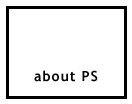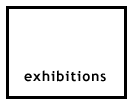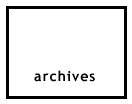BLA BLA
Marius Lut
14 May - 30 June 2022
Opening Saturday 14 May 17-19hrs.
PS is pleased to announce a solo exhibition BLA BLA by Marius Lut. The title of the show BLA BLA , here the letters CK on CK are covered up, if this were not the case it would say BLACK on BLACK, it simply refers to the process black on black regardless of shape or carrier, but also flirts with the idea that art should not be talked too much about and finally it is also a nod to DADA. The exhibition shows a series of new works Lut designed especially for this exhibition in PS projectspace in Amsterdam.
Marius Lut previously exhibited in PS projectspace, Marius Lut
NEW WORKS, on October 21 - November 25, 2012.
Education; 1998 KABK, Koninklijke Academie van Beeldende Kunsten, Den Haag, The Netherlands. 2008/2009 Rijksakademie van Beeldende Kunsten , Amsterdam, The Netherlands. Marius Lut Lives and works in Den Haag
The loudmouth and the whisperer
About the work of Marius Lut
By Hans den Hartog Jager
Marius Lut’s work seems easy to survey. Very easy to survey. Take for instance the paintings he has made over the last two years: they always consist of one simple shape, painted in one clear colour. Lut paints hard forms, compelling shapes that for the most resemble a logo, or pictogram, or a traffic sign. Although it is a sort of traffic sign that imposes an order that is very difficult to fathom. As this is the remarkable aspect of these paintings: they may seem clear and simple, trying to hit you directly between the eyes, but the longer you observe them, the more intangible they become. Just try to describe Lut’s painted and taped shapes – the attempt will fail when using elementary descriptions such as triangle, square or ellipse. Indeed, his shapes deviate from such geometric terms in such a way that you as the observer are forced to seek solace in woolly language constructions such as ‘a white circle, with a blue chunk missing that is almost, but not quite in the middle’ or ‘a bright orange shape, a cross between an ellipse and a square, with slightly rounded corners’. And even those are still not satisfactory. Moreover, this intangibility is to an increasing extent also applicable to Lut’s colours. The colours in most of his works from 2007 or 2008 can, with some effort, still be described as fluorescing yellow or sky blue, but for the last year Lut has increasingly used a light sort of greyish green that is both muddy and mossy, light and grimy, mat and nevertheless lecherous. Impossible to capture. For the observer this leads to a peculiar experience. Paintings that seem so hard and clear and are nevertheless so intangible. As if Lut is trying to slide between things.
Marius Lut (The Hague, 1976) surely took his time in finding his form. Lut’s ‘career’ started in 1994, when he was still at secondary school and was given the assignment to paint a still life in water colours. “Until that moment I was not particularly interested in art”, he relates. “But during that assignment something happened: I painted a piece of tablecloth that was a bit Mondriaan-like. This struck me so much that I immediately wanted to go on with it. Shortly thereafter I read in the newspaper that Willem de Kooning had died. What was written about him, fascinated me to such an extent that I immediately went out to buy a book about him. From that moment on, I knew that I wanted to become a painter”. In 1998, Lut started studying at the Royal Academy for Visual Arts in The Hague, but he only managed to persevere for one year. From then on, he worked almost ten years on his own and kept connected with the outside world by means of the artist initiative Billytown in Rijswijk, which he set up with some friends. In 2008 he was accepted at the National Academy of Visual Arts in Amsterdam, but till that time Billytown was the only place where Lut exhibited his work, always abstract and always navigating between power and intangibility, between abstraction and meaning. Nevertheless, when he is now asked which painters influenced him the most, he still refers to Willem De Kooning as his main influence and not to abstract or minimalist painters such as Piet Mondriaan or Ellsworth Kelly. Lut: “Kelly’s work is very beautiful and aesthetic, but it, well, you know, doesn’t excite me. De Kooning’s work does: so much power, such an explosion of energy and paint. With him, you always think the paint was just dabbed on the canvas, but upon closer inspection, you realise that is was all done with great preciseness. I still think that this is the most beautiful.”
The wonder thing is that Lut in this way – of all things in a description of Willem de Kooning’s oeuvre – comes very close to what he seems to strive for in his own works: a blow with unexpected aftershocks. Only after you have managed to cope with the smack of Lut’s headache-causing yellow, or the confusion over the intangible orange field, you notice the first minor irregularities: the small rounded corner at the bottom of the ellipse or the fact that the blue chunk in the white circle is almost, but not quite in the middle. But as an observer you’re not yet finished – on the contrary: it would seem that at that moment the perception of his paintings really begins for Lut. As the deviations do not get stuck in a little corner or an unexpected balance. The longer you look at it, the more obvious it becomes that Lut does not strive for the minimalist hard edge art of painting in the Ellsworth Kelly tradition. His work is too intangible for that form and in particular: too equivocal. To begin with, Lut himself expressly divides his work into two categories: the small works and the large works. When working on his small works, he is experimenting, seeking his form, using tape more often to build the fields and sounding out how one and the same form reacts to different colours and textures – just as long until he has found the final balance between form, colour and composition. Then the moment has come to transform the small work into a large work: as he himself admits, for Lut the large paintings form the crux of his oeuvre, like bringing everything to a conclusion at the end of a series.
However, the remarkable thing is that the doubt doesn’t disappear in his large works: Lut doesn’t bother to remove the sketch and support lines he has used to set up the form. This gives an unexpected vulnerability to his apparently hard forms – as if Lut wants to show us that these forms are not unapproachable, have not been enforced from above, but have come into being through searching and sensing. As soon as you realise this, you immediately observe that Lut’s work contains a lot more of these ‘vulnerable’ elements. These vary from the drippings that become visible alongside the canvas’ edges, to the way Lut creates his forms: these are by no means always painted, but might just as well have been attached to the canvas with a thick plastic layer, after which Lut puts several layers of mat paint over it. And however marginal this difference may seem: due to the plastic, the form not only becomes slightly loose from the canvas (if you have a closer look you can see the tiny seam), but also the surface is not flat anymore. Due to this, the light reflects differently in any form of incidence of light – and subsequently this apparently robust and self-assured form that initially to you as an observer bellowed its existence into your face, becomes somewhat bashful. Somewhat insecure.
This is perhaps the essence of Marius Lut’s current work: it is a quest for the point at which observing becomes intangible. However simple and direct his work might seem, eventually the observer is manoeuvred into a weird paradox by Lut. At first he is tempted, enticed by the powerful, clear form, but the longer he subsequently keeps looking, the more he catches himself trying to push away that form from his field of vision, trying to forget the loudmouth, to be able to also give his attention to the subtle, whispering gestures that provide the hard form the right to exist. Thus you are shaken to and fro by Lut’s work, between the loudmouth and the whisperer that both in their own way think that they can win the battle for attention. And that is the most intriguing part: in Lut’s best works this battle remains undecided. You can see both of them: the loudmouth and the whisperer, your mind and your gaze keep switching, you cannot give attention to one of them without continuing to listen to the other. And in between there you are, you as an observer, torn apart, but fully aware that you are observing, more and more, and that precisely due to this inner division, the moment is powerfully intensified. This is no solution, but it is surely a fulfilment. One that continues to vibrate for a long time.
Hans den Hartog Jager (1968) is a writer and art critic. In 2003 he made his debut with the novel Zelf God worden. [Become God yourself]. He has since published the novel Maltus (2006) and several books about visual art, such as Verf, hedendaagse Nederlandse schilders over hun werk [Paint, current Dutch painters about their work] (2004), Haai op sterk water [Shark in spirits] (essays, 2008) and Dit is Nederland [This is Holland](2008) in which he introduces eighty authoritative paintings from the Dutch art history to the reader.
www.mariuslut.com
The exhibition BLA BLA can be visited on Saturdays from 13.00 to 17.00 hrs. and by appointment. |
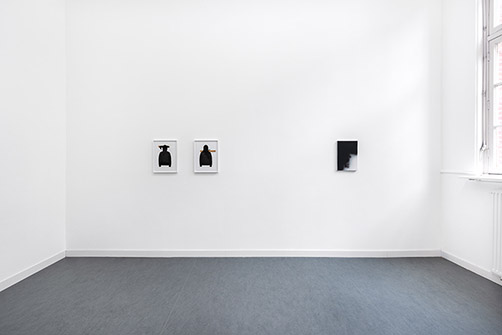
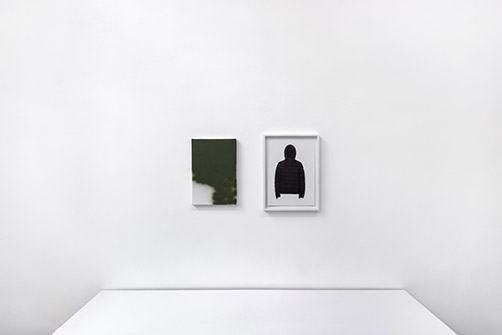
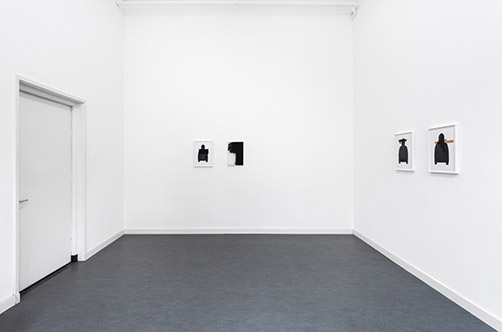
|

